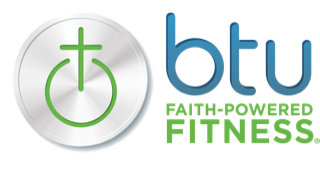Fitness for less can be had on a number of levels. Now as a fitness coach and blogger, I don’t mind investing some money in good gear and healthy food. But for many people, getting fit is hard enough. Throw in the need to keep expenses down, and just forget about it, right? Well, not necessarily. Getting in shape doesn’t have to cost a fortune. But in order to have fitness for less, one must be intentional, prepared, committed, and at times, a little creative.
Before we proceed, it’s important to define exactly what I mean by “getting fit”. Getting fit isn’t simply exercising. In fact, I’d argue that getting in shape is 80% nutrition, and 20% exercise. Fortunately, I’m going to show you a few ways to save on both. And keep in mind that all this is in addition to the fact that being healthier is preventative medicine: it will save you money on your future doctor bills, prescription drugs, insurance premiums and so on. It’s like the compound interest of the health world.
Fitness for Less: No-to-low cost options
Did you know that there are 58 National Parks in the United States, comprising nearly 52,000,000 acres? You can burn a lot of calories exploring 52,000,000 acres. Costs to visit some of them are free and others offer annual passes at reasonable rates.
Great Smokey Mountains too far? Maybe you could start jogging a few of the over 41,000 miles of trails at one of the 6,624 State Parks. I don’t believe you that there’s no park in your area.
Running not your thing? You could go mall-walking, but I like to get outside when I can (and mall-walking could tempt you to spend or worse, incite some serious lane-rage at a pack of wild blue hairs). So I take the kids to the zoo quite often using an annual pass. Additionally, there are some free zoos, like the excellent St. Louis Zoo. Lugging around one kid on my back and pushing two in a stroller is a nice way to get exercise without doing an official “workout.” Fitness for less may not feel like fitness at all!
Fitness for Less: Mid-cost options
A good pair of shoes can seem like a lot of money at the time, but trust me, they’re worth it. Just be sure to get the right shoe for the right exercise. In other words, never ever, EVER train for a marathon using trail running shoes (not that I would ever be so dumb as to make that painful mistake… ahem). Whether you’re running, doing aerobics, playing tennis (at a free state park of course), you name it, there’s a shoe designed for that purpose. Investing in the correct shoe will save you co-pays to the chiropractor, podiatrist, sports medicine internist, you name it. And get a good synthetic blend sock while you’re at it.
Food-wise, the general consensus is that organic is healthier. But it’s also more expensive. One obvious way to save is buying at a wholesale club. We buy a good portion of our organic produce at Costco, which has a surprisingly good selection. They also have some signature brand products (aka Kirkland), such as organic chicken broth, that will help you get more bang for your buck.
Another great option is a CSA (Community Supported Agriculture). Sign-up for weekly, bi-weekly, or monthly baskets of organic produce, eggs, even various organic meats, all farmed in your area. Some CSA’s will even deliver to your door (fewer gas-guzzling trips to the grocery). Split the subscription with a neighbor or family member and everybody wins.
Fitness for Less: Higher-cost options that are worth it
Now if there’s a danger with CSA’s (and wholesale clubs), it’s the danger of having too many leftovers. What will you do with an extra pound of spinach or two pounds of apples? I’ll tell you what we do, we blend them… not juice them, but blend them, with our Vitamix. The Vitamix is a multi-purpose powerhouse that will make everything from smoothies to peanut butter; ice-cream to soup (it even heats the soup!). Yes, our Vitamix was expensive. But we use it two to four times a day and it’s guaranteed to last seven years. Plus, when you involve the children into the preparation process, they’re much more inclined to like the outcome. Just ask my three-year-old who gave the Tomato-Carrot-Peach-Banana smoothie a “Yummy!” Furthermore, your home brewed smoothies are cheaper and infinitely better for you than store-bought prepackaged options.
Another purchase that pays off long-term are workout videos. Just ask the Home Fitness Gurus, and you’ll see they are partial to their products. Take for example the wildly popular P90X. The cost of the videos is $120. And let’s say you spent another $150 for the pull-up bar and some used dumbbells. You’re in for $270 total, right? The program is six days a week, for 13 weeks, for a total of 78 workouts. $270 divided by 78 is $3.46 per workout (while having the convenience of working out at home). Do another 13 week round and you’ve cut the cost in half, to $1.73. I’ve been through P90X four times, which would make the cost per workout about 87 cents! That’s the real cost of P90X and at 87 cents/workout, that’s fitness for less! And the videos, pull-up bar, and dumbbells are yours to keep forever. Compare that to a gym membership where you use it or lose it, the cost never ends, and will only ever go up, and workout videos win hands down! Furthermore, did you know that doing a Beachbody program entitles you to free fitness coaching from Home Fitness Gurus? Everybody likes free! Now I’m not suggesting that Beachbody videos are the only good options out there. I’m just suggesting that people crunch the numbers before saying “no” to workout DVDs because of initial sticker shock.
Fitness for Less: Do’s and Don’ts
- Do NOT buy a one-purpose machine like the latest “revolutionary” ab-only gadget. Instead, purchase multipurpose gear like stability balls, medicine balls, dumbbells, or resistance bands that can be used for a wide variety of exercises.
- Do NOT buy a gym membership, workout videos, gear, anything IF you’re not fully committed to sticking with it. Did you know 60% of gym members quit coming after the first three months. If you’re just going through the motions (and only you can answer this), it might not be time. Instead, ask yourself if you’re really ready (requires complete honesty), keep researching, and start to set aside money for when you are ready.
- Do NOT go this road alone. Instead, find an accountability partner, get support, ask for help. A big part of Weight Watchers success comes from the weekly weigh-ins and counseling. Yes, you can get fit by yourself, but you increase your chances tenfold by having a friend checking in with you regularly. Furthermore, by doing a group fitness class like a boot camp, you can get the accountability you need, good instruction, and pay less per class than you would with a personal trainer.
- Do NOT underestimate the importance of proper nutrition. I said it before, 80% of your fitness success comes from good, clean eating. So if you only have money for a set of dumbbells or the right food, pick the right food (and start setting aside money for the dumbbells). You can exercise and still not be healthy. However, it’s pretty hard to eat the right foods in the right amounts and not be healthy. And that’s where the daily meal replacement drink Shakeology really comes in handy. In fact, Shakeology can save you money, because you don’t need the other, less nourishing junk that keeps your body running at a sub-par level.
You see, even trying to get fitness for less, you have options galore, at all price ranges. And these are just the tip of the iceberg.
Remember, fitness is not biased. Anyone, regardless of location, financial status, age, gender, or race can get fit if they’re willing to learn, sacrifice, and persist. What is stopping you now? You no longer have any excuses because getting in shape doesn’t require getting in debt.

